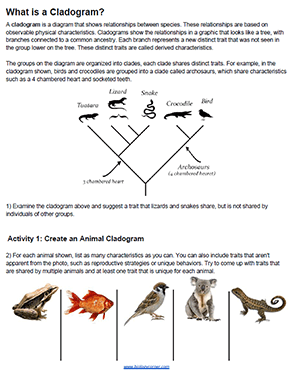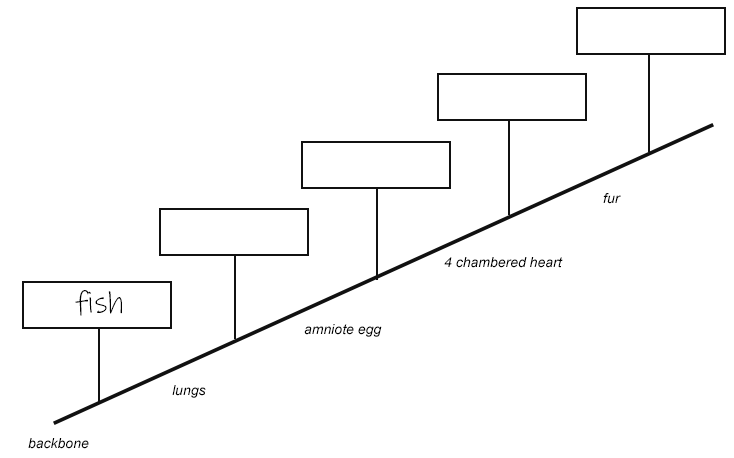
Students are given a description and an example of a cladogram showing the relationship between lizards, snakes, crocodiles, and birds. They are then walked through the process of creating a cladogram for five animal examples: frog, fish, bird, koala, and lizard.
The process involves suggesting traits that these animals share and finding traits that are unique to determine outgroups. At first students just discuss the traits and then they score based on given traits, such as amniote eggs.
Students then complete a cladogram that is already partially constructed. The goal is simply to walk students through the steps so that they can create a new cladogram on their own.
The last stage of the lesson tasks students with creating their own cladogram from scratch. Students can choose from suggested groups, like fish or insects and use their own knowledge to create a chart with characteristics that are shared among their examples. This part can be challenging and there are no “correct” answers. The goal is for students to appreciate the process of grouping organisms into clades.

For the final step, I suggest using whiteboards or chalk markers so students can go through many edits and revisions. I circulate and ask students to defend their choices or clarify their groups. I also recommend that the cladogram build section is done is small groups.
Grade Level: 8-12
Time Required: 40-50 minutes
HS-LS4-1 Communicate scientific information that common ancestry and biological evolution are supported by multiple lines of empirical evidence

